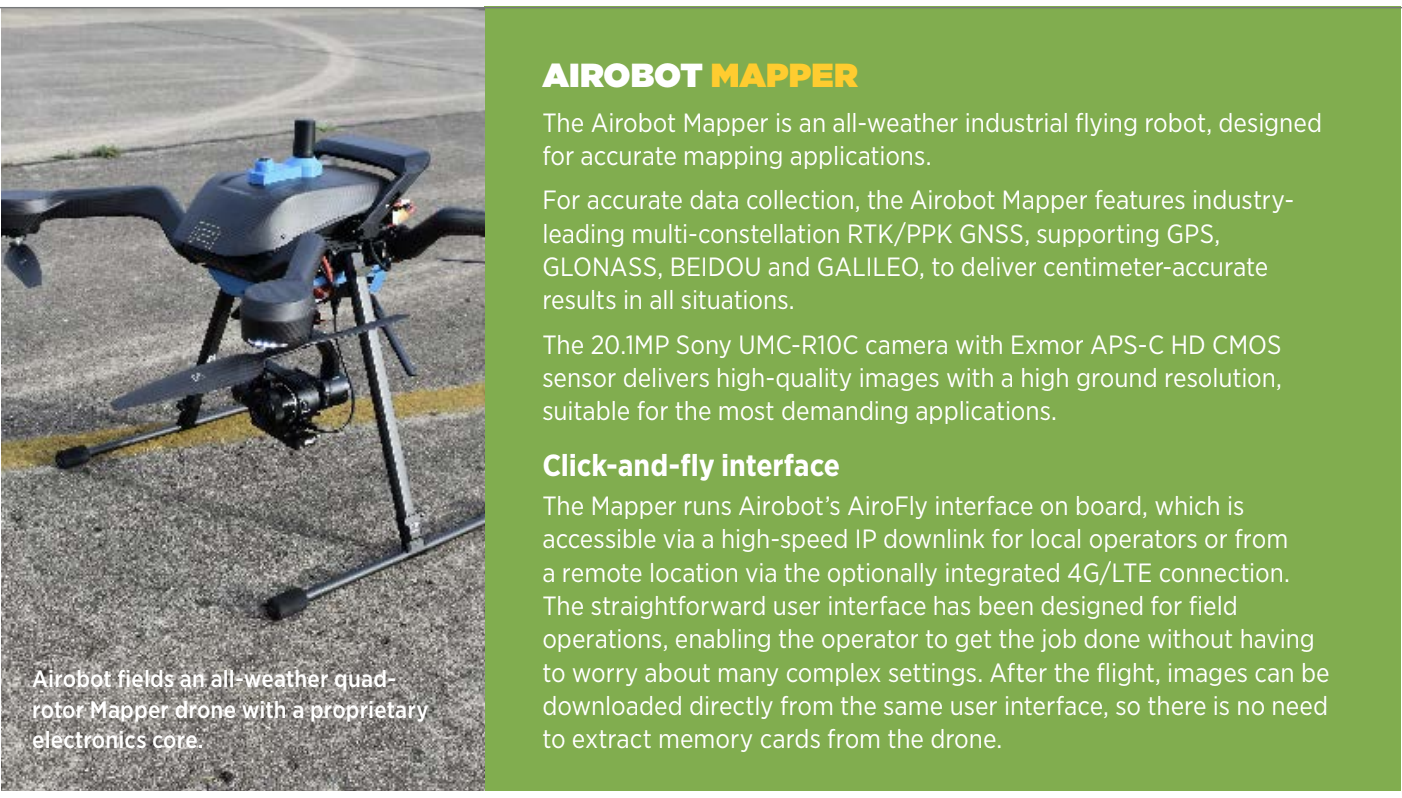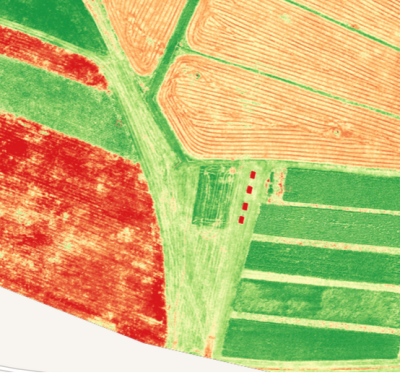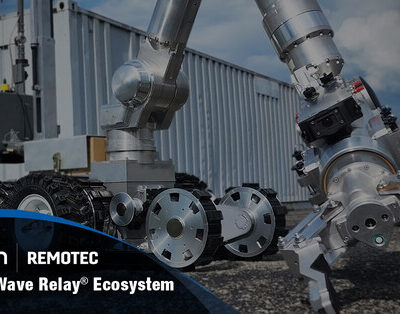
Droneport, a regional airport in Belgium, is set to become the first in that country, and possibly in Europe, to use autonomous drones for security inspection, pending regulatory approval. The airport is using a system developed by Airobot, a drone technology company also headquartered at Droneport.
“We are a small regional airport, but we have a large area of land to manage and control,” said Droneport CEO Kris Van Den Bergh. “We serve conventional aircraft flights, and we have extensive secure zones for drone operators.”
Droneport is built on a decommissioned military airbase, which until recently was not completely enclosed. “We are not too far from the city of Sint Truiden, and over the years we have had inadvertent trespassers,” Van Den Bergh said. “The airport is completely fenced in now, but we still need to patrol the perimeter. We also have to be ready to deal with air traffic incidents. If we have a problem on the runway, a flat tire or an engine failure, we need to be able to get out there quickly and have eyes on the scene.”
Mutual Customers
One of Droneport’s customers is the Airobot company. Based at the Droneport facility, where it carries out its own research and development work, Airobot provides mapping technology for construction sites, accident mapping for police services and imagery for other security-related applications. Now Airobot is getting set to launch security surveillance operations for Droneport.
The CEO of Airobot, Jan Leyssens, explained his company’s approach: “We build an all-weather quad-rotor. We buy the frame from Acecore in the Netherlands, and then we put all the electronics inside to make a beyond visual line of sight (BVLOS) drone.” Airobot’s advanced Mapper has a 20.1MP Sony UMC-R10C camera. “For the airport inspection we also have a camera option with RGB and IR capabilities,” Leyssens said. “We have an autonomous range of about 30 minutes, so we can easily cover the entire Droneport site, patrolling around a certain boundary, or, if we have a security breach or some other incident, if we get an alarm, we can respond to that.”
Van Den Bergh offered his collaborative perspective. “As a customer of Droneport,” he said, “Airobot rents parts of our building for their own use. But that’s not why we chose them for this job. We looked at several options, even buying a drone ourselves and training a pilot, but we eventually decided we wanted a drone that could fly autonomously, with an operator, rather than a qualified pilot. We looked at different options and the Airobot system was the most robust, the most advanced, the most reliable.”
Leyssens further fleshed out the technology involved in the system. “We’ve designed our own electronics core, the AiroCore,” he said. “For safe, automated, remote flight, we wanted something that is much more integrated than some of the drones you see nowadays. We have a redundant power supply, we have autopilot onboard, Septentrio multi-constellation, multi-frequency GNSS, to resist jamming and spoofing. We have real-time computing power for making flight decisions. We have an extra computer onboard, where we can also run our payload and flight management software.”
Accessibility and trustworthiness were other design elements. “We don’t use PC-based software to control the drone,” Leyssens continued. “We don’t want people to have to maintain a specific software on their mobile or on their Mac or other platform. We’re using a web-based interface, so you log in to the drone itself via a secured 4G/5G IP link, enter the mission plan, and the drone performs it autonomously.” Airobots, Leyssens said, only uses proven technologies from friendly countries. “If you look at autonomous drones as a public asset, it’s more important to select reliable components rather than the cheapest component on the shelf.”
Droneport’s Van Den Bergh is in contact with colleagues at a number of airports in Europe, and he knows that some of them are already using manually piloted drones for security purposes. “Today there are airports where they might drive out with a drone in a truck, set it up and launch it manually, do a flight with a pilot, and then load it back in the truck and drive away. We want a drone system that we can dispatch automatically from a central location and fly on a regular route around our perimeter, without a pilot. And in the case of an incident, we want to be able to send the drone to a specific location on the airfield, where it can hover and send images back.”

Rules and Regulations
The Airobot application looks promising, but one important step remains before it can be launched. “We need the regulatory approval to fly an autonomous drone for airport surveillance,” Van Den Bergh said. “For the Belgian authorities, this is still new.” Until now, drone flight legislation in Europe has remained a patchwork, with different rules and approval processes governing operations in different countries. A new EU-wide regulation entered into force in June 2020, but EU member states still have a year from that date to understand and implement it.
“We are required to have surveillance procedures on the site, for safety and security reasons,” Van Den Bergh said, “and we are helping our authorities to understand how efficiently we can do this with drones. We will not be flying outside our perimeter, and not when there is any other flying activity, and with drone ID, geofencing and track recording, the risk is basically zero, like flying in your own garden. This would be the first time this is allowed in Belgium, and possibly in Europe. I’m hoping we can get it approved in the first quarter of 2021.”
If all goes well, Droneport and Airobot will be looking to expand security-related drone operations in the coming years, possibly extending beyond the airport’s perimeter to encompass accident response in coordination with local emergency services.






